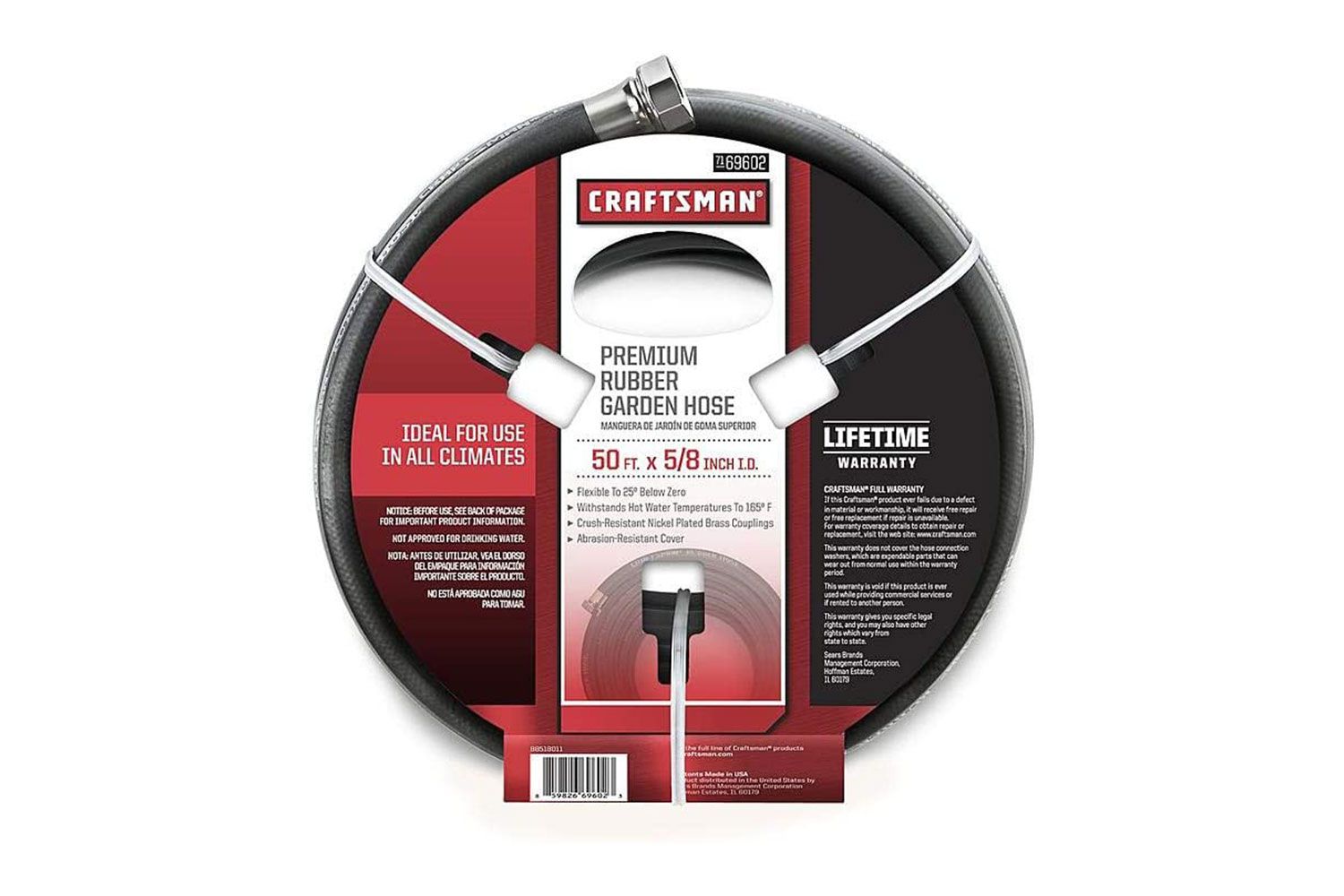Stretchy Hoses The Best Solution for Your Gardening Needs


Gardening is a fulfilling hobby that allows you to express your creativity while connecting with nature. However, the joy of gardening can quickly fade away if you’re constantly struggling with heavy and tangled hoses. That’s where stretchy hoses come to the rescue! In this article, we will explore everything you need to know about these innovative watering tools, including their features, benefits, alternatives, and how to choose the best one for your needs.
What Are Stretchy Hoses?

Stretchy hoses, also known as expandable hoses or flexible hoses, are a revolution in the world of gardening tools. These hoses are designed with a unique material composition that expands when filled with water and retracts back to its original size when the water is turned off. Unlike traditional hoses made of rigid materials, stretchy hoses are lightweight, compact, and easy to maneuver.
These hoses typically consist of an inner tube, usually made of latex or rubber, surrounded by a durable fabric or polyester outer layer. The combination of materials enables the hose to stretch and contract, offering flexibility and ease of use.
How Do Stretchy Hoses Work?

The working principle behind stretchy hoses is simple yet ingenious. When the water supply is turned on, the inner tube of the hose fills with water, causing it to expand in length. This expansion allows the hose to reach its full potential without any kinks or tangles. Once the water is turned off, the pressure inside the hose decreases, and it retracts back to its original size, making it compact and easy to store.
The ability to expand and contract makes stretchy hoses highly convenient for gardeners. They eliminate the need for manual winding and unwinding, saving you time and effort. Additionally, their lightweight nature reduces strain on your arms and back, making them suitable for users of all ages and physical abilities.
The Pros and Cons of Stretchy Hoses
As with any gardening tool, stretchy hoses come with their own set of advantages and disadvantages. Let’s take a closer look at the pros and cons:
Pros:
- Lightweight and Compact: Stretchy hoses are significantly lighter than traditional hoses, making them easy to carry and store. Their compact size allows for hassle-free transportation and requires minimal storage space.
- Flexible and Maneuverable: The expandable nature of these hoses grants them exceptional flexibility. They can navigate around obstacles in your garden without kinking or tangling, ensuring a smooth watering experience.
- Easy Installation: Stretchy hoses usually come with universal connectors that fit most outdoor faucets. Setting them up is quick and straightforward, requiring no additional tools or adapters.
- Durable and Long-lasting: Despite their seemingly delicate appearance, stretchy hoses are designed to withstand the rigors of regular use. The high-quality materials used in their construction make them resistant to leaks, tears, and punctures.
- Versatile Usage: Stretchy hoses are not limited to watering your plants. They can also be used for washing cars, cleaning outdoor surfaces, or even filling up pools, thanks to their adjustable water pressure settings.
Cons:
- Limited Water Pressure: While stretchy hoses offer adjustable water pressure, they may not provide the same force as traditional hoses. This limitation might affect tasks that require strong water flow, such as deep cleaning or power washing.
- Susceptible to Punctures: Although stretchy hoses are generally durable, they are not entirely immune to punctures from sharp objects like thorns or garden tools. Care must be taken to avoid potential damage.
- Potential for Tangling: Although stretchy hoses are designed to resist tangling, there is still a possibility of mild twisting or knotting. Proper handling and storage can minimize this occurrence.
Alternatives to Stretchy Hoses
While stretchy hoses offer numerous advantages, they might not be the perfect fit for everyone. Fortunately, there are alternative watering solutions available in the market. Here are a few options to consider:
- Traditional Garden Hoses: Traditional garden hoses made of rubber or PVC remain a popular choice due to their affordability and accessibility. They provide consistent water flow and are suitable for heavy-duty tasks.
- Soaker Hoses: Soaker hoses are designed specifically for targeted watering, making them ideal for gardens with delicate plants or low water pressure. These hoses release water gradually along their length, ensuring efficient irrigation.
- Retractable Garden Hoses: Retractable hoses operate similarly to stretchy hoses but use a different mechanism. They feature a built-in reel that automatically retracts the hose after use, eliminating the need for manual winding.
- Drip Irrigation Systems: Drip irrigation systems are an efficient way to water plants directly at their root zone. These systems distribute water slowly and evenly through a network of tubes and emitters, conserving water and minimizing evaporation.
- Sprinkler Systems: Sprinkler systems are a popular choice for large gardens or lawns. They distribute water through sprinkler heads, covering a wide area with ease. These systems can be automated for convenience.
Choosing the right watering solution depends on your specific needs and preferences. Consider factors such as garden size, water pressure, plant types, and your own convenience when making a decision.
How to Choose the Best Stretchy Hose for Your Needs
Finding the perfect stretchy hose for your gardening needs requires careful consideration of various factors. Here’s a step-by-step guide to help you make an informed choice:
- Determine Your Garden Size: Start by assessing the size of your garden or outdoor space. Measure the distance from your water source to the farthest point that needs watering. This will give you an idea of the length of hose you require.
- Check the Hose Length: Look for stretchy hoses available in lengths suitable for your garden size. Ensure there is some flexibility in case you need to reach beyond the measured distance.
- Consider the Material: Pay attention to the materials used in the construction of the hose. Opt for high-quality latex or rubber inner tubes for durability. The outer fabric layer should be robust and resistant to abrasions and punctures.
- Evaluate the Connectors: Check if the hose comes with compatible connectors for easy attachment to your outdoor faucet or watering system. Universal fittings are preferable, as they offer versatility.
- Assess the Water Pressure: Some stretchy hoses have adjustable water pressure settings. If you require strong water flow for certain tasks, ensure that the hose can provide adequate pressure.
- Read Customer Reviews: Before making a purchase, read reviews from other users to gauge their satisfaction with the product. Look for feedback on durability, performance, and any potential issues.
- Consider Additional Features: Some stretchy hoses come with extra features like spray nozzles, multiple watering patterns, or storage bags. Evaluate these additional features and decide if they align with your requirements.
- Compare Prices: Finally, compare prices across different brands and models to find a stretchy hose that offers the best value for your money. Remember to consider factors such as warranty and customer support when comparing options.
By following these steps, you can ensure that you choose the best stretchy hose that meets your gardening needs effectively.
Stretchy Hoses vs. Traditional Garden Hoses: A Comparison
While traditional garden hoses have been around for decades, stretchy hoses offer a fresh approach to watering. Let’s compare the two options to help you understand their differences:
Stretchy Hoses:
- Pros:
- Lightweight and compact design
- Flexibility and maneuverability without kinks or tangles
- Easy installation and convenient storage
- Versatile usage beyond watering plants
- Durable construction
- Cons:
- Limited water pressure compared to traditional hoses
- Susceptible to punctures from sharp objects
- Possibility of mild tangling with improper handling
Traditional Garden Hoses:
- Pros:
- Higher water pressure for heavy-duty tasks
- Wide availability and affordability
- Suitable for larger gardens or lawns
- Compatibility with various watering accessories
- Long-lasting and resistant to punctures
- Cons:
- Heavy and cumbersome to handle
- Prone to kinking and tangling
- Requires manual winding and storage space
- Limited flexibility in tight spaces
Consider your specific requirements, such as garden size, portability, and desired water pressure, when choosing between stretchy hoses and traditional garden hoses. Both options have their merits, so it ultimately comes down to personal preference and convenience.
Tips for Using and Maintaining Stretchy Hoses
To ensure optimal performance and longevity of your stretchy hose, here are some essential tips to keep in mind:
- Handle with Care: While stretchy hoses are durable, it’s important to handle them gently to avoid unnecessary wear and tear. Avoid dragging the hose over rough surfaces or sharp edges that could cause punctures.
- Store Properly: After each use, drain the water from the hose completely and store it in a cool, dry place away from direct sunlight. This will prevent damage from UV rays and prolong its lifespan.
- Avoid Freezing Temperatures: Stretchy hoses should not be exposed to freezing temperatures, as this can lead to cracks or bursts in the inner tube. Drain the hose and store it indoors during winter months.
- Inspect for Damage: Regularly inspect your stretchy hose for signs of damage, such as leaks, tears, or punctures. Address any issues promptly by patching or replacing damaged sections.
- Clean Regularly: To maintain optimal water flow, clean the inner tube of the hose regularly to remove anyaccumulated debris or mineral deposits. You can use a mild detergent and a brush to scrub the inner surface, then thoroughly rinse with water.
- Avoid Overstretching: While stretchy hoses are designed to expand and contract, it’s important not to overstretch them beyond their recommended limits. Excessive stretching can strain the hose and lead to decreased durability.
- Use Proper Water Pressure: Follow the manufacturer’s guidelines regarding water pressure settings for your stretchy hose. Avoid using excessive water pressure, as it may cause damage to the hose or affect its performance.
- Protect from Sun Exposure: Prolonged exposure to direct sunlight can degrade the materials of the stretchy hose over time. When not in use, consider covering the hose or keeping it in a shaded area to prevent sun damage.
By following these tips, you can maximize the lifespan and functionality of your stretchy hose, ensuring that it remains a reliable gardening tool for years to come.
The Best Stretchy Hoses on the Market
When it comes to choosing the best stretchy hose, there are several top-rated options available. Here are three highly recommended stretchy hoses known for their quality and performance:
- FlexiHose Expandable Garden Hose: This stretchy hose is renowned for its durability and versatility. It expands up to three times its original length and features solid brass fittings for leak-free connections. With a 9-pattern spray nozzle included, the FlexiHose offers excellent value for its price.
- GrowGreen Expandable Garden Hose: The GrowGreen stretchy hose boasts a durable triple-layer latex core and a robust polyester outer fabric. It expands up to 50 feet and comes with a high-quality spray nozzle featuring multiple watering patterns. Its compact size and lightweight design make it easy to store and carry.
- TBI Pro Garden Hose: The TBI Pro stretchy hose is known for its heavy-duty construction and superior performance. It features a double-layer latex core and a strong, high-density woven outer fabric. With brass connectors and an ergonomic spray nozzle, this hose offers exceptional durability and versatility.
These stretchy hoses have garnered positive reviews from users and provide excellent functionality for various gardening needs. Consider your specific requirements and compare these options to find the best fit for you.
Conclusion
Gone are the days of struggling with heavy and tangled garden hoses. Stretchy hoses offer a lightweight, flexible, and convenient solution for all your watering needs. With their expandable design, ease of use, and durable construction, they have become a favorite among gardeners worldwide. Whether you have a small backyard garden or a sprawling landscape, stretchy hoses can simplify your gardening tasks and enhance your overall experience.
By considering factors such as hose length, materials, water pressure, and additional features, you can choose the best stretchy hose that suits your unique requirements. Remember to handle and maintain your hose with care to ensure its longevity and optimal performance.
Investing in a high-quality stretchy hose will not only make your gardening more enjoyable but also save you time and effort. So, say goodbye to tangled messes and hello to hassle-free watering with the best stretchy hose for your gardening adventures!
FAQs (Frequently Asked Questions)
- Are stretchy hoses suitable for all types of gardens?
Stretchy hoses are versatile and can be used in various garden sizes and types. However, if you have a large garden or require high water pressure, traditional garden hoses may be more suitable.
- Can I connect multiple stretchy hoses together for longer reach?
Yes, some stretchy hoses allow you to connect multiple units together using compatible connectors. Just ensure that the water pressure remains adequate for efficient watering.
- Are stretchy hoses safe to drink from?
While stretchy hoses are designed for gardening purposes, they are not recommended for drinking water. It’s best to use hoses specifically labeled as safe for potable water if you need to access drinking water outdoors.
- Can I repair a punctured stretchy hose?
In many cases, punctures in stretchy hoses can be repaired using patch kits specifically designed for such repairs. Follow the manufacturer’s instructions or consult a professional if needed.
- Do stretchy hoses come with warranties?
Yes, many reputable stretchy hose brands offer warranties to protect against manufacturing defects. Be sure to check the warranty terms and conditions before making a purchase.


